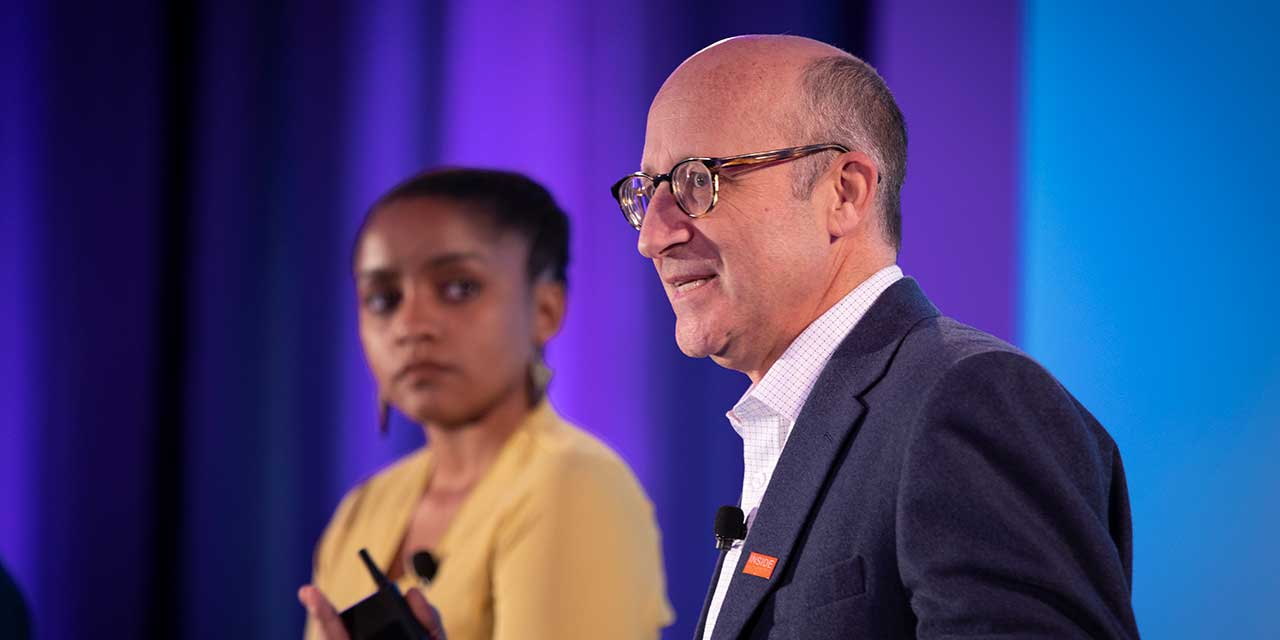As the co-founder and co-editor of Inside Higher Ed, the web-based news portal on postsecondary education, Doug Lederman knows the inner workings of higher education as well as anyone. Having carefully observed and reported on the sector for more than 20 years, he’s under no illusions: when it comes to technology, Lederman says, “this is not an industry that moves fast. Higher education tends to adopt change pretty slowly. I personally don’t think that’s a terrible thing.”
But he has also noticed, in recent years, that the pace of change is starting to pick up, and one of the key reasons behind the quickening is open educational resources (OER). “A lot of things that have worked historically in higher ed aren’t working now, partly because of whether people can afford them, and partly because technology is enabling things that weren’t possible before,” says Lederman. “OER is very much an innovation of this particular moment. It’s a wedge that is probably speeding up the curve of technological change in higher education.”
Open educational resources refer to openly-licensed and freely-accessible digital curricular content—free digital textbooks being the most prominent, though not the only, symbol of the trend. And what Lederman sees is an OER movement that is still small, but that stands to have an outsized impact.
“OER is not a nascent concept, but it’s still a nascent enterprise, so it’s still early days,” he says. One recent survey shows that 9 percent of higher education faculty used OER in their courses last academic year, up from 5 percent the year before—meaningful growth, Lederman says, while acknowledging that it’s still a pretty small minority. “But there are significant macroeconomic pressures on higher education that are contributing to the growth of OER. Higher education is under intense pressure, particularly in the United States, to prove its value and to lower its prices.” And many faculty and institutions are adopting OER to relieve those pressures.
“People tend to focus on the fact that it’s free, but the ‘open’ part means you can download it and change it,” he says. Lederman points out that OER does have a more precise definition centered around the “five Rs” of its licensing, which allow adopters to:
- Retain it, whether by printing, copying, downloading, or any other means
- Reuse it in classes, study groups, videos, websites, etc.
- Revise it to suit the needs of a particular course or group of students
- Remix it with other open resources
- Redistribute it to others, whether the original, revised or remixed versions
The OER model represents a giant leap from the traditional textbook publishing model, which prized select scholars as authorities in their fields and were published under comparatively restrictive copyright requirements. It’s a model for curriculum design that values the contributions of every instructor, and treats knowledge as a public good.
For all its philosophical departures, however, it’s OER’s low cost to students that is driving its adoption—and beginning to upend the textbook industry. “Most professors who use OER, I believe, are motivated first and foremost by a philosophical desire to lower the cost of curricular materials for their students,” Lederman says, pointing out that professors and their institutions are increasingly reluctant to assign $150 textbooks for courses.
“There’s a lot of downward pressure on what textbooks cost. The publisher’s business models, like the journalism business models in my industry, are falling apart. And OER is one of a few experimental endeavors right now to try to change the economics of what we used to call textbooks.”
A number of forces are aligning behind the OER movement. Governments are starting to incentivize OER adoption through grants and other programs. “New York poured $16 million into open educational resources in the last two years, and the U.S. Federal Government just had its first OER funding in the last two appropriations bills,” he points out. Institutions are also starting to actively promote OER among their faculty, though Lederman cautions them in this regard. “Top down initiatives almost always fail in higher education,” he observes. “If an institution comes forward and says, ‘We’ve got this great new approach that we all want you to do,’ it’s not gonna happen. Or it’s going to get pushback because it’s coming from the administration.”
A more productive strategy, Lederman says, would be to incentivize OER’s adoption—to pull people towards it, rather than push it upon them. “There’s a pretty strong argument made that there are many institutions where teaching isn’t valued enough, and that’s visible through the lack of rewards,” he says.
Inside Higher Ed’s recently published 2018 survey of faculty attitudes about technology found that, according to Lederman, “there is a pretty strong view among a lot of faculty members that their institutions do not reward pedagogical innovation. There is a ton of work to be done in altering the reward structure, having institutions encourage experimentation.”
For more on active learning, OER and the agile classroom, subscribe to Top Hat’s YouTube channel.


